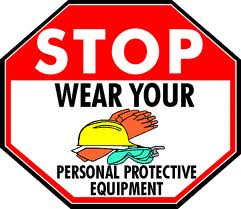Jacks (Download)
JACKS What is a jack? A jack is mechanical device used to lift heavy loads or apply great forces. Jacks employ a screw thread or hydraulic cylinder to apply very high linear forces. Different type of jacks OSHA Subpart I section 1926.305 recognizes three kinds of jacks. Lever and Ratchet Screw Hydraulic Lever and Ratchet Jack The ratchet jack is a lever based machine, that uses a ratchet method to raise up cargo. They come in many different forms, and are used in many industries. Ratchet jacks are used in a wide range of building and construction industries, as well as heavy lifting operations such as mining. Metal fabrication shops , warehouses or other indoor facilities may include ratchet jacks in a tool set for moving tools, equipment, or goods. Screw Jack A screw jack is commonly used with cars but is also used in many other ways, including industrial machinery, building construction and even airplanes. They can be short, tall, fat, or thin depending on the amount of pressure they will be under and the space that they need to fit into. The screw has a thread designed to withstand an enormous amount of pressure for an extended amount of time. Once up, they normally self lock so that they won’t fall if the operator lets go. They hold up well to the wear of repeated use. http://www.ehow.com/how-does_4965099_screw-jack-work.html Hydraulic Jack Each hydraulic jack has a reservoir, pump, check valve, main cylinder, ram piston and release valve. The cylinder can hold hydraulic fluid (oil), and a pumping system (hand-powered or mechanically-powered) moves the fluid and applies pressure to the fluid. The pumping system pushes hydraulic fluid through a one-way valve that allows the fluid to pass into the jack cylinder, but does not allow the fluid to pass back. Hydraulic Jack Strand Jack A strand jack is a type of hydraulic jack it has a hollow hydraulic cylinder with a set of steel cables passing through the open center, each one passing through two clamps – one mounted to either end of the cylinder. The jack operates in the manner of a caterpillar’s walk: climbing (or descending) along the strands by releasing the clamp at one end, expanding the cylinder, clamping there, releasing the trailing end, contracting, and clamping the trailing end before starting over again. Strand jacks can lift very heavy loads of up to 20,000 tons with multiple jacks for construction and engineering purposes. used to erect bridges, offshore structures, refineries, power stations, major buildings and other structures . http://en.wikipedia.org/wiki/Strand_jack Hydraulic Jack Strand Jack Safety Concerns Injury from lack of PPE (Personal Protection Equipment) The main concern when using a jack is having it give way or collapse during use. The main contributing factors to this occurring are as follows: Using a faulty jack Improper placement or installation of jack Lack of adequate foundation for the jack Overloading the jack Improper use of jack (misalignment) Mechanical failure Working under elevated loads without the use of blocking Fatality Example A worker was crushed when a mobile home fell off the jacks . The wheels and axles had been removed and the unit was not blocked. Source: Extracted from OSHA Accident Investigation Data 2007-2009 Fatality Example A worker was in the process of raising a pump jack scaffold at his home and was electrocuted when the scaffold pole made contact with a 13,000 volt power line. Source: Extracted from OSHA Accident Investigation Data 1990-2007 Fatality Example A worker was killed while putting wood under the wheels of a tractor trailer when the trailer hitch came down on his head. The truck’s jacks were used inappropriately, and the truck was neither blocked nor cribbed. Source: Extracted from OSHA Accident Investigation Data 2007-2009 Fatality Example A worker, who crawled under a manufactured home, was crushed by a manufactured home when it fell off the shoring and jacks holding it up. There were no witnesses. Source: Extracted from OSHA Accident Investigation Data 1990-2007 Fatality Statistics OSHA investigated over 160 fatalities relating to jacks from 1990 thru 2009. -The majority of the accidents were from jack scaffolds. Source: Extracted from OSHA Accident Investigation Data 1990-2009 OSHA Regulations for Jacks 1926.305(a) General requirements. 1926.305(a)(1) The manufacturer’s rated capacity shall be legibly marked on all jacks and shall not be exceeded. 1926.305(a)(2) All jacks shall have a positive stop to prevent over travel. OSHA 29 CFR 1926 Construction Industry Regulations updated April, 2009 OSHA Regulations for Jacks 1926.305(c) Blocking. When it is necessary to provide a firm foundation, the base of the jack shall be blocked or cribbed. Where there is a possibility of slippage of the metal cap of the jack, a wood block shall be placed between the cap and the load. 1926.305(d)(1) “Operation and maintenance.” 1926.305(d)(1)( i ) After the load has been raised, it shall be cribbed, blocked, or otherwise secured at once. 1926.305(d)(1)(ii) Hydraulic jacks exposed to freezing temperatures shall be supplied with an adequate antifreeze liquid . OSHA 29 CFR 1926 Construction Industry Regulations updated April, 2009 OSHA Regulations for Jacks 1926.305(d)(1)(iii) All jacks shall be properly lubricated at regular intervals. 1926.305(d)(1)(iv) Each jack shall be thoroughly inspected at times which depend upon the service conditions. Inspections shall be not less frequent than the following: 1926.305(d)(1)(iv)(a) For constant or intermittent use at one locality, once every 6 months OSHA 29 CFR 1926 Construction Industry Regulations updated April, 2009 OSHA Regulations for Jacks 1926.305(d)(1)(iv)(b) For jacks sent out of shop for special work, when sent out and when returned, 1926.305(d)(1)(iv)(c) For a jack subjected to abnormal load or shock, immediately before and immediately thereafter. 1926.305(d)(1)(v) Repair or replacement parts shall be examined for possible defects. 1926.305(d)(1)(vi) Jacks which are out of order shall be tagged accordingly, and shall not be used until repairs are made. OSHA 29 CFR 1926 Construction Industry Regulations updated A pril, 2009 Safe Work Practices PPE (Personal Protection Equipment) Gloves are an important piece of personal protection when using a jack. It is important to have a good grip on the jacking device when jacking a heavy load. Hard hats are also very important, when using a jack it is common for workers to be working under heavy objects in close quarters where hitting ones head may be a concern Boots are always good safety protection when using jacks they can avoid slipping and can protect ones feet from falling objects. Safe Work Practices Accurately assess the load to be raised Use a jack with a rated capacity that exceeds the load being lifted. The jack should have a capacity plate or other markings providing lifting capacity information. Inspect the jack before and after each use. Do not use a jack that is defective. Any sign of hydraulic fluid leakage is sufficient reason to remove the jack from use. http://www.memun.org/RMS/LC/safetyshorts/Jack.pdf Safe Work Practices Always set the jack on a firm and level foundation. When necessary to provide a firm foundation, the base of the jack should be blocked or cribbed. To avoid slippage of the metal cap of the jack place a wooden block between the jack head and the contact surface of the load. When jacking from a floor, make sure that the load limit of the floor is not exceeded. All lifts should be vertical with the jack perpendicular, at a right angle to the load. Before working under a raised load, install jack stands or blocking to keep the load from accidentally falling. http://www.memun.org/RMS/LC/safetyshorts/Jack.pdf Think Safety Work Safely

